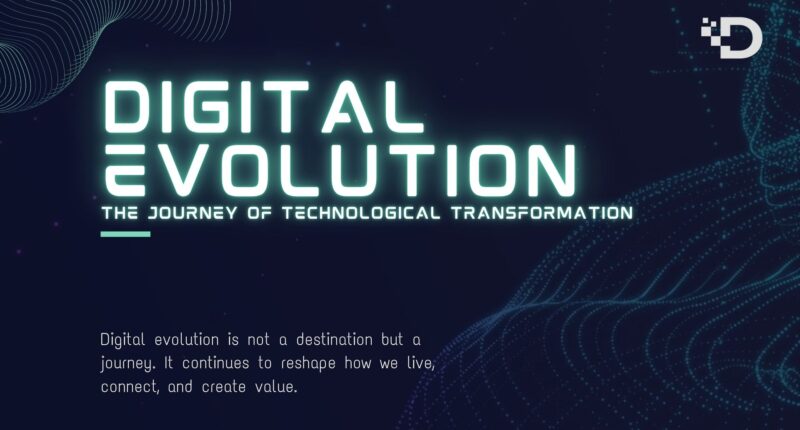Digital Evolution: The Journey of Technological Transformation
The digital age has revolutionized every corner of our world, from how we communicate to how we conduct business. This transformation, often referred to as Digital Evolution, reflects the continuous advancement and integration of digital technology into all aspects of human life. In this article, we’ll explore what digital evolution is, how it has evolved over time, and where it’s headed next.
What Is Digital Evolution?
Digital evolution refers to the gradual and continuous process of adapting and integrating digital technologies across societies, industries, and personal lives. Unlike a sudden disruption, digital evolution happens in stages, constantly shaping how we interact, work, and live.
This evolution is not limited to businesses alone — it impacts education, healthcare, finance, transportation, and even government systems. It’s the natural progression of innovation driven by new technologies such as cloud computing, artificial intelligence (AI), the Internet of Things (IoT), and more.
The Timeline of Digital Evolution
The journey of digital evolution can be broken down into several significant phases:
1. The Analog to Digital Shift
The first major wave came in the 1980s and 1990s when businesses and consumers began transitioning from analog systems (paper, film, tape) to digital formats. Computers, digital storage, and software began replacing traditional tools, paving the way for greater efficiency.
2. The Internet Revolution
In the mid to late 1990s, the rise of the internet transformed the world into a connected global network. Email, websites, and early e-commerce platforms emerged, creating the foundation of the digital economy we know today.
3. Mobile and Cloud Era
The 2000s introduced smartphones, mobile apps, and cloud computing. This phase of digital evolution made information and services available on-demand, anywhere, anytime. Businesses began migrating operations to the cloud, leading to new levels of flexibility and scalability.
4. AI and Data-Driven Transformation
Today, we’re in the age of intelligent digital transformation. AI, machine learning, big data, and automation are revolutionizing industries. Businesses use data to make real-time decisions, personalize customer experiences, and drive innovation faster than ever before.
Key Drivers of Digital Evolution
Several forces are accelerating digital evolution globally:
- Technology Advancements: Innovations in AI, 5G, blockchain, and robotics fuel rapid digital progress.
- Customer Expectations: Consumers demand faster, smarter, and more personalized services.
- Global Connectivity: Internet access and mobile devices are reaching even remote regions, bridging digital gaps.
- Business Competitiveness: Companies must innovate digitally to survive and outperform competitors.
- Data Explosion: The vast amount of data being created drives deeper insights and smarter decision-making.
The Impact of Digital Evolution
The effects of digital evolution are far-reaching. Here’s how it’s changing the world:
1. Business Transformation
Organizations across all sectors are automating processes, utilizing cloud platforms, and delivering digital-first customer experiences. This shift increases agility, reduces costs, and enhances productivity.
2. Workforce and Skills Shift
Jobs are evolving with technology. There’s growing demand for digital skills like coding, data analysis, cybersecurity, and AI engineering. Lifelong learning is now essential to keep up.
3. Improved Healthcare and Education
Telemedicine, health apps, and wearable tech are transforming patient care. Digital tools are also reshaping education through e-learning platforms, virtual classrooms, and personalized learning paths.
4. Smart Cities and Environments
Digital technologies help governments manage infrastructure, reduce energy use, and improve public services through smart grids, IoT devices, and real-time data analytics.
The Future of Digital Evolution
The next phase of digital evolution will focus on deeper integration of emerging technologies:
- AI Everywhere: From self-driving cars to AI assistants, intelligent systems will become the norm.
- Metaverse and Virtual Worlds: Immersive virtual environments may redefine how we work, shop, and socialize.
- Quantum Computing: With the potential to solve problems beyond today’s computers, quantum tech could revolutionize industries.
- Ethical and Sustainable Tech: As technology grows, so does the need for ethical use, privacy protection, and eco-friendly innovation.
Conclusion: Embrace the Digital Journey
Digital evolution is not a destination but a journey. It continues to reshape how we live, connect, and create value. By staying informed, adaptable, and tech-savvy, individuals and businesses can thrive in this ever-evolving digital landscape.









